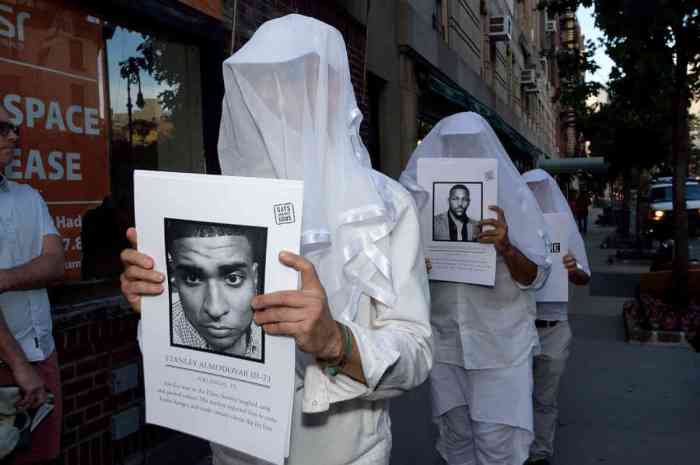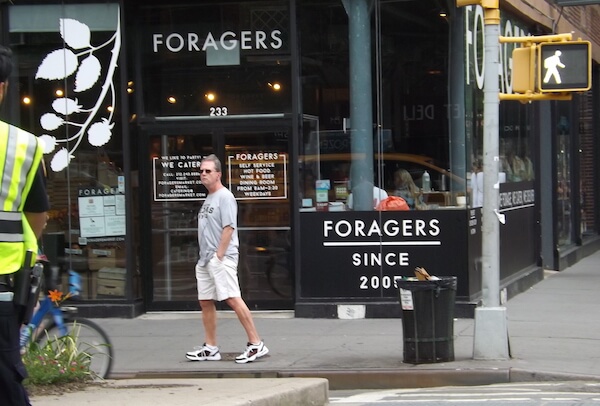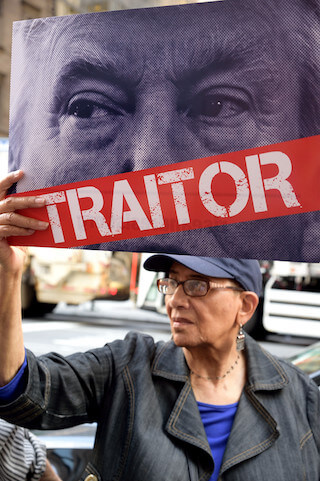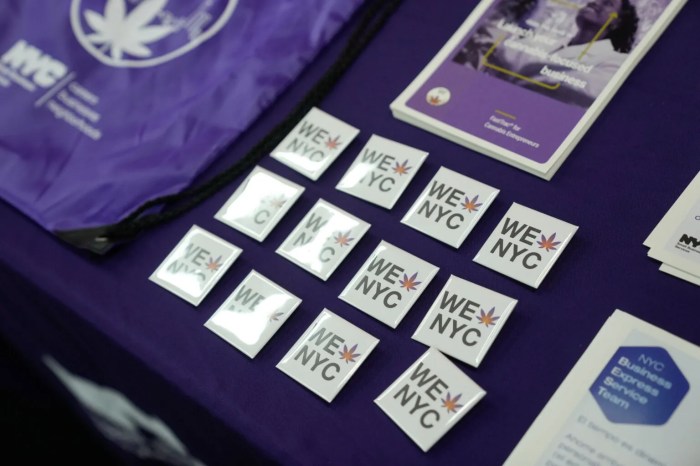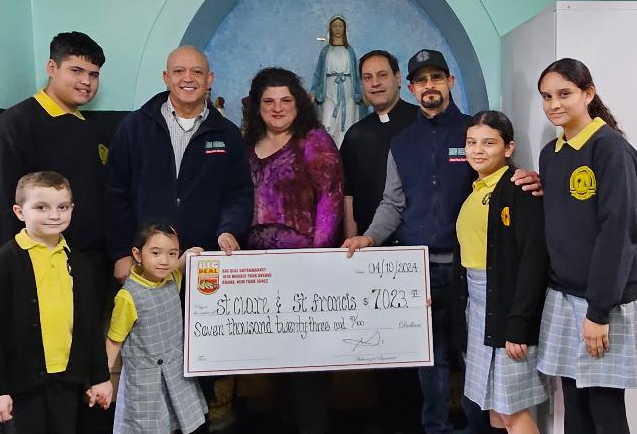Rodger McFarlane.
In the days following the June 12 killings of 49 people in an Orlando, Florida, gay club, LGBT gun control groups popped up around the country, including two named Gays Against Guns that formed independently in New York City. Dozens of established LGBT groups joined AIDS, progressive, and faith groups in endorsing limited gun control measures.
While Orlando launched vigils, rallies, and even a protest at the headquarters of the powerful pro-gun lobby, the NRA, in Virginia, little is known about how often guns are used in attacks on LGBT people.
“There isn’t a lot of information on how gun violence impacts LGBTQ communities specifically,” said Emily Waters, the research and education coordinator at the National Coalition of Anti-Violence Programs, which issues annual reports documenting attacks on LGBT people. “One thing that we do know is that of the 24 reports of [anti-LGBT] hate violence-related homicides in 2015, 14 of them were gun-related.”
Nearly two-thirds of gun deaths involve shooter taking their own life
What is known about guns generally is that in any given year most of the gun deaths in the US are not homicides, they are suicides, and suicides are not often discussed in the debates over guns in America.
In 2013, the latest year for which data is available, there were 33,636 gun deaths in the US, according to the federal Centers for Disease Control and Prevention (CDC). Of those, 21,175 were suicides and 11,208 were homicides. The remaining gun deaths were accidental or undetermined. More than 42,000 people commit suicide every year in America and roughly half of those suicides are committed with a gun, according to data from the American Foundation for Suicide Prevention.
While various claims are made about the prevalence of suicide among LGBT people, little is also known about that phenomenon. But there is no doubt that suicide with a gun has touched the community, most notably in the death of Rodger McFarlane, who was for years a leading figure in AIDS and LGBT groups.
McFarlane took his life in Truth or Consequences, New Mexico, in 2009 when he shot himself in a state park. At the time, friends, including playwright Larry Kramer, insisted that the 54-year-old McFarlane had simply made a choice. Dr. Howard Grossman told Gay City News in 2009 that his suicide was a “rationally-made decision.” While that is possible, other facts in his life suggest that mental illness played a role as it does in the vast majority of suicides.
McFarlane was the first paid executive director at GMHC from 1983 to 1985. From 1989 through 1994, he was the founding executive director of Broadway Cares/ Equity Fights AIDS, the theater industry group that has raised millions to support HIV/ AIDS service organizations. He served as executive director of the Gill Foundation, the philanthropic organization founded by gay Denver software entrepreneur Tim Gill, from 2004 through late 2008.
While successful in these non-profits, he struggled financially and filed for personal bankruptcy in 2009. McFarlane reported assets worth $26,000 and owing $241,000 to the IRS, $63,000 to New York tax authorities, and $85,000 in other debts.
He could also be erratic and volatile.
“He was just a really complicated man,” said Tim Sweeney, who replaced McFarlane at the Gill Foundation, in 2008. “Brilliant and difficult and accomplished… he would suck the air out of the room in a meeting and then he would disappear on his own in the desert for several weeks.”
For all of that, he carefully planned his suicide. McFarlane purchased the gun he used to kill himself in Denver roughly a year before his death. In a letter to a friend, he called it “my gun, which I cherish like a Samurai’s blade.” The letter, which he mailed to a friend the day before his death, was among records that Gay City News obtained from the New Mexico State Police a few months after McFarlane’s death.
His various reasons for his suicide were contradictory. He feared debilitating disease that would result in his becoming a patient and pointed to his back surgery and recent bouts of angina as threatening that outcome. But he had also recovered from or successfully treated those things.
“I’ve always planned to off myself before I became seriously ill,” he wrote. “I always imagined that would come with a sudden diagnosis, a clearly marked crossroads like a stroke or lung cancer. But I’ve re-thought that, especially over the last four years… I was afraid I’d have a heart attack in a public place, be taken unconscious to the ER, and wake up after surgery in permanent patienthood.”
McFarlane kept his plan secret, though his letter suggests that he believed the one friend was concerned about his future.
“I think you’ve sensed something was up with me for many months, but couldn’t pin it down,” he wrote. “You’ve gently inquired on the phone a couple of times since December and even wondered aloud what I was doing when we were together a couple of weeks ago in New York.”
McFarlane sold or gave away all of his possessions. He paid off his remaining debts and cashed out his 401(k), including paying the taxes. He closed his Denver apartment and moved to Truth or Consequences, where he pre-paid his cremation.
The police documents suggest that he never used the weapon prior to his suicide. A man who was riding his bike in the park stopped by a public toilet near where McFarlane was sitting on a large blue tarp. The man entered the toilet then came back out after hearing a shot.
The man asked McFarlane if that was “a little dangerous shooting around here,” he wrote in a statement for police. “[H]e replied, yes, just wanted to make sure it worked.”
The man reentered the toilet and quickly came out again after hearing a second shot. Seeing McFarlane, he reported the shooting to park staff, who contacted the police.
As suicides often do, McFarlane left some of the people who knew him questioning how well they knew him and torn about his actions.
“I have no small amount of anger about the tragedy of someone who in his life gave such tender care-taking to those whose bodies were deteriorating not allowing himself that same journey,” Sweeney told Gay City News in 2009. “I am frustrated that he did not want a circle of people to be around him. It makes me feel that in some ways I never really knew this man.”



























